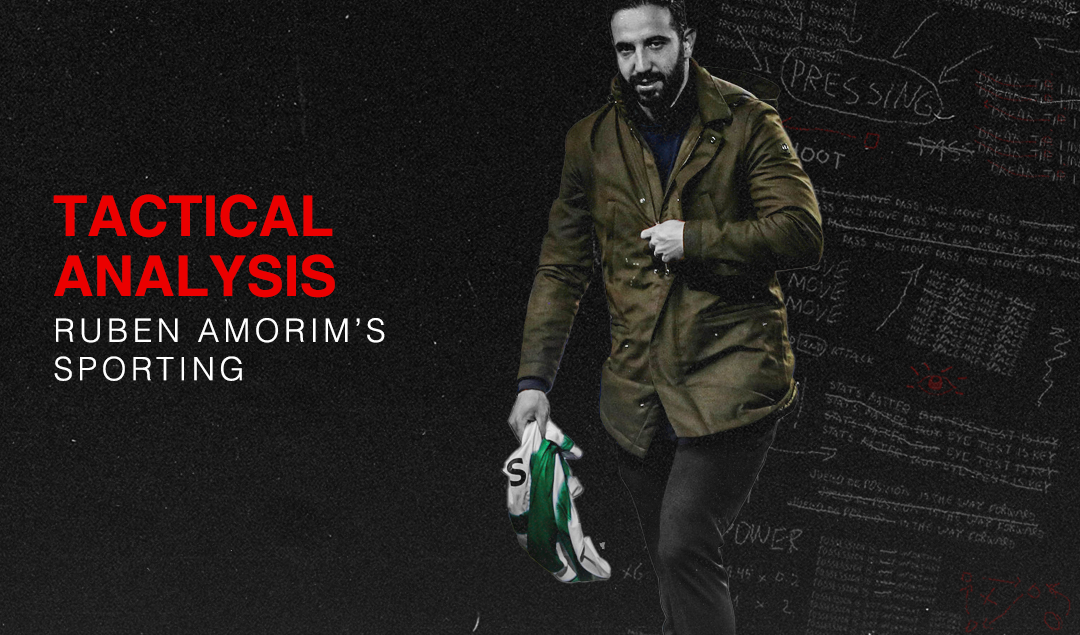How Rúben Amorim Turned Sporting into a Powerhouse
When Rúben Amorim took charge of Sporting in March 2020, the club had won just four major trophies in the previous decade: two Taça de Portugal titles and two Taça da Liga titles. Since then, he’s ended a 19-year drought for the league title, he’s guided them to two Taça da Liga titles, and he has the Lions on course for a historic campaign.
The Lisbon giants currently sit first in the table, one point above Benfica, who have a game in hand, and 10 points above Porto. After edging Benfica to a spot in the Taça de Portugal Final, they will return to Jamor after five years and face off against either Porto or Vitória on May 26. However, perhaps their biggest remaining challenge will occur on Saturday, as they host Benfica in a potential title decider.
It has been nothing short of a spectacular campaign for the Leões, who boast the most wins (22), the fewest draws (2) and the most goals (77) in the Primeira Liga, having scored 16 more than the second-best attack. At 39 years of age, Amorim has continued to demonstrate why he is one of the finest up-and-coming managers in the game, and it’s little wonder that the likes of Liverpool, Barcelona and Bayern Munich have cast their eyes on him as a potential candidate for their coaching vacancy. But what exactly makes Sporting such a formidable opponent? Let’s dive deeper into Amorim’s tactics to find out.
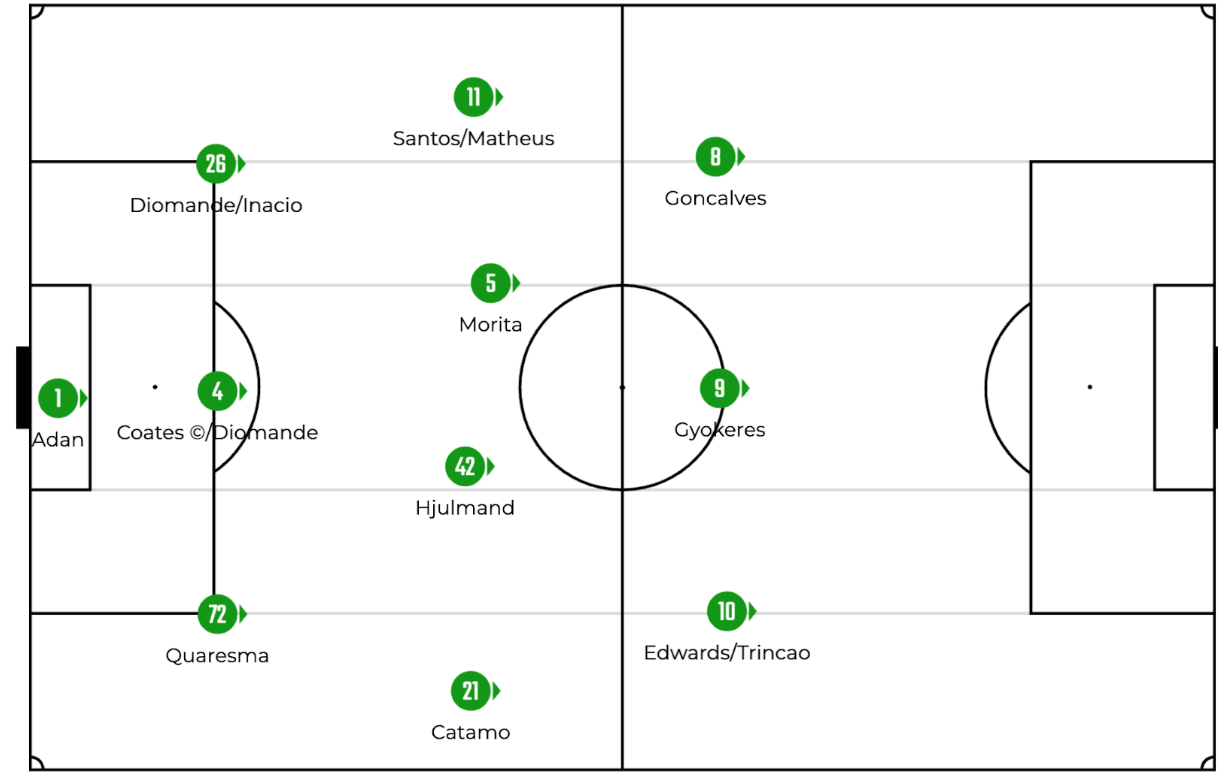
Sporting will typically line up in a 3-4-3 with target man Viktor Gyökeres leading the line, whilst the seasoned captained Sebastián Coates locks down the defense in the middle of the back three. Sporting’s goalkeeper — Franco Israel since Antonio Adán suffered a long-term injury — will act as an extra man in build-up, with Coates stepping out of defense. As the wide center backs will split and push into wider areas, Coates has more room to drive forward with the ball and advance possession into central areas.
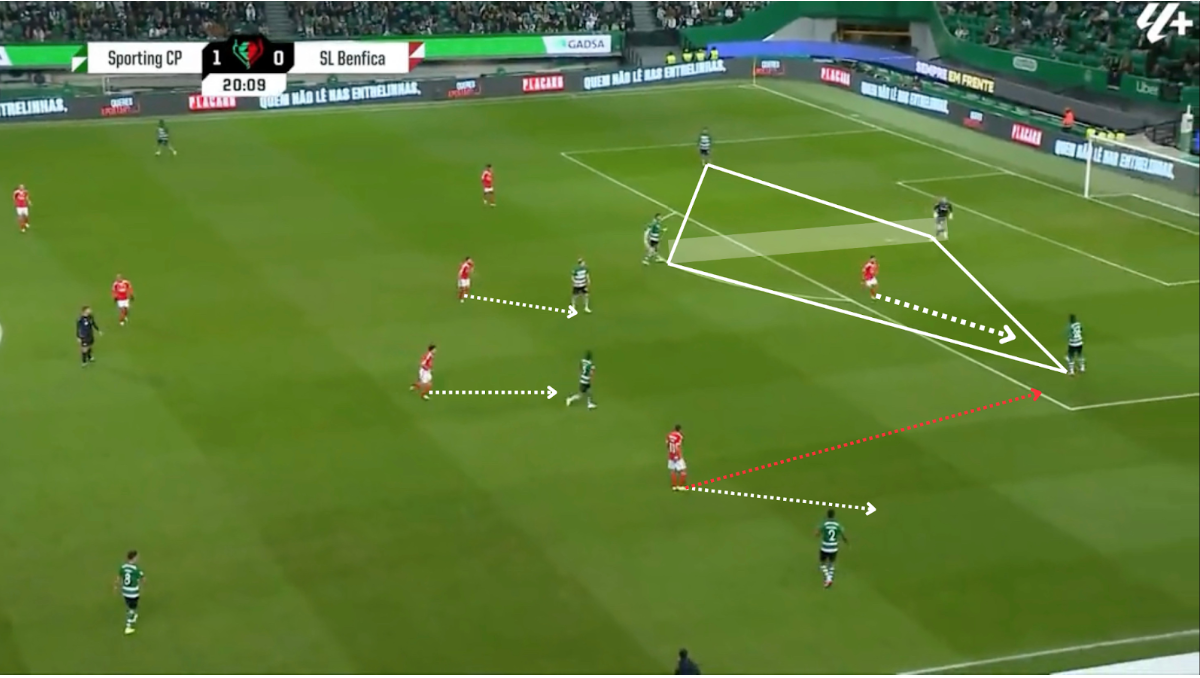
We can see an example of how Sporting like to build out of pressure in the above image vs. Benfica, where Rafa Silva goes to press the wide center back, with the winger — Ángel Di María — occupied with stopping Matheus Reis and thus unable to push up. Sporting will construct the first phase of possession in a 3-2 shape with Coates being completely free to push forward, circulate possession and push into the opposing half, allowing Sporting the time and space to adjust their shape and launch a dangerous attack.
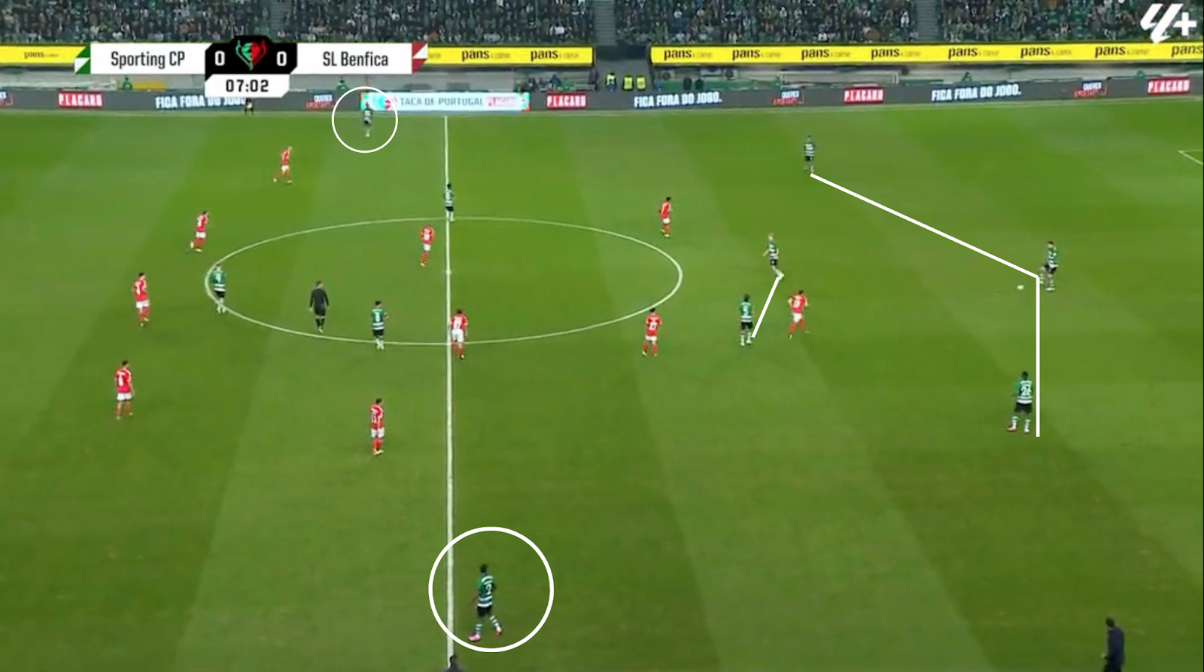
Morten Hjulmand will typically operate as the deeper midfield partner, often rotating with Coates and dropping into defense to organize the build-up play, enabling the more technically adept Hidemasa Morita to push forward, combine with his attacking teammates and create goal-scoring opportunities. The Japanese midfielder has been a revelation since arriving from Santa Clara in 2022, helping to fill Matheus Nunes’ void as an all-out box-to-box dynamo as evidenced by the below stats from FBRef.

While holding the 3-2 shape, the manner in which Sporting will orchestrate the first phase of possession varies between building up through the wing backs, the midfielders or utilising the long ball. Over the wing backs and especially in tight situations close to goal, Sporting will look for triangles and third-man balls to come out of tricky situations, which comes with a midfielder or a centre-back with the winger and wing back.
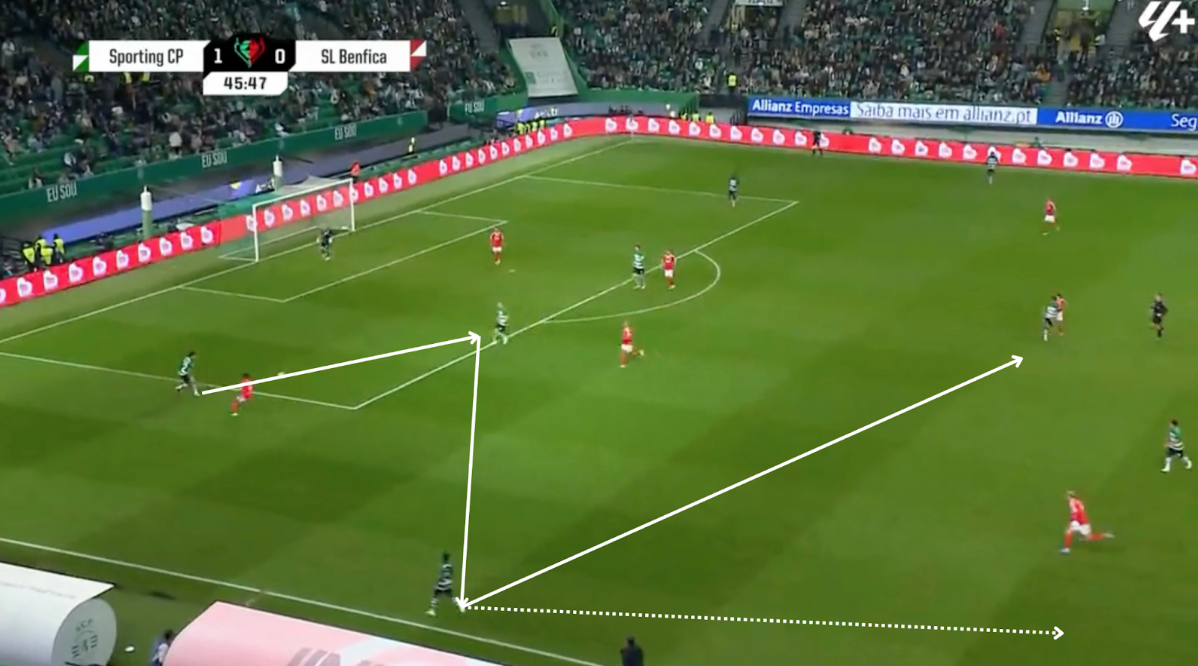
This generally has a knock-on effect, as the intention of the play can be read relatively easily especially for a well-prepared opponent. As the wing back here is completely alone, a Benfica player is forced to press him which forces whole team which to step up and positionally change across the biggest part of the pitch. While the fullback is on the ball, he might put his studs on the ball to provoke the press and create gaps further forward.
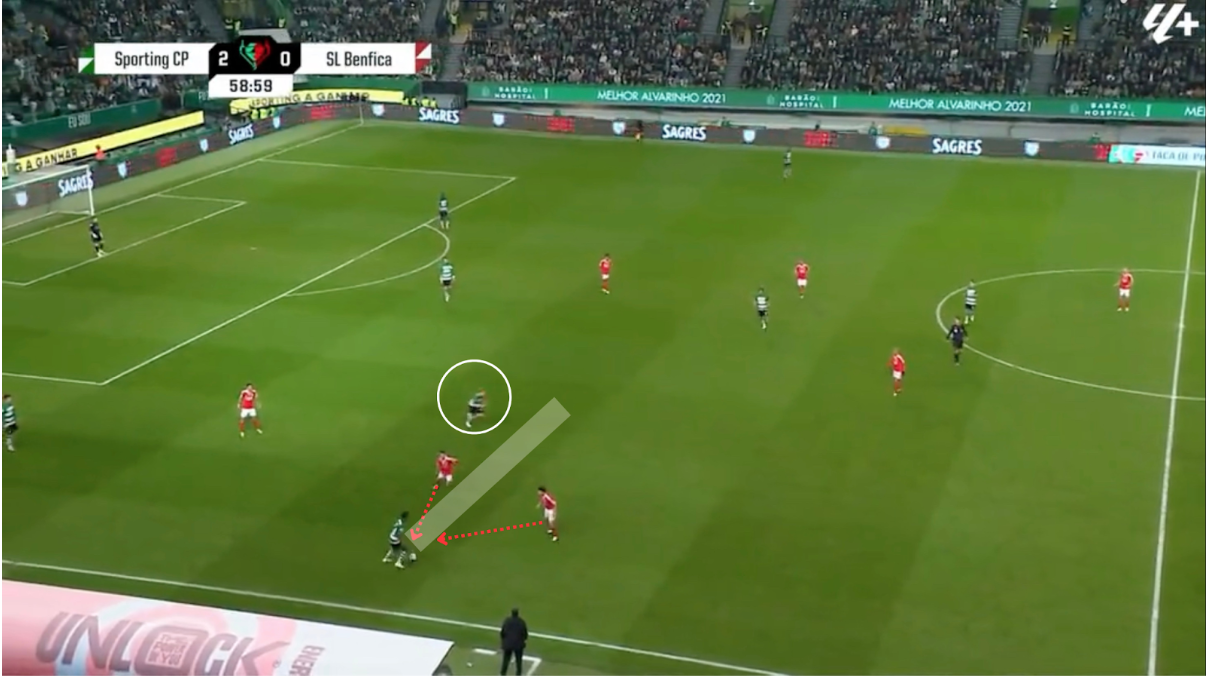
This ‘pausa’ is an effective bridge to building up through the midfield, because – while nowhere near to Roberto De Zerbi’s Brighton – Sporting don’t mind to put their studs on the ball to enable their midfielders and especially Hjulmand to find gaps in the opposition’s press and free up passing lane to himself and to a teammate.
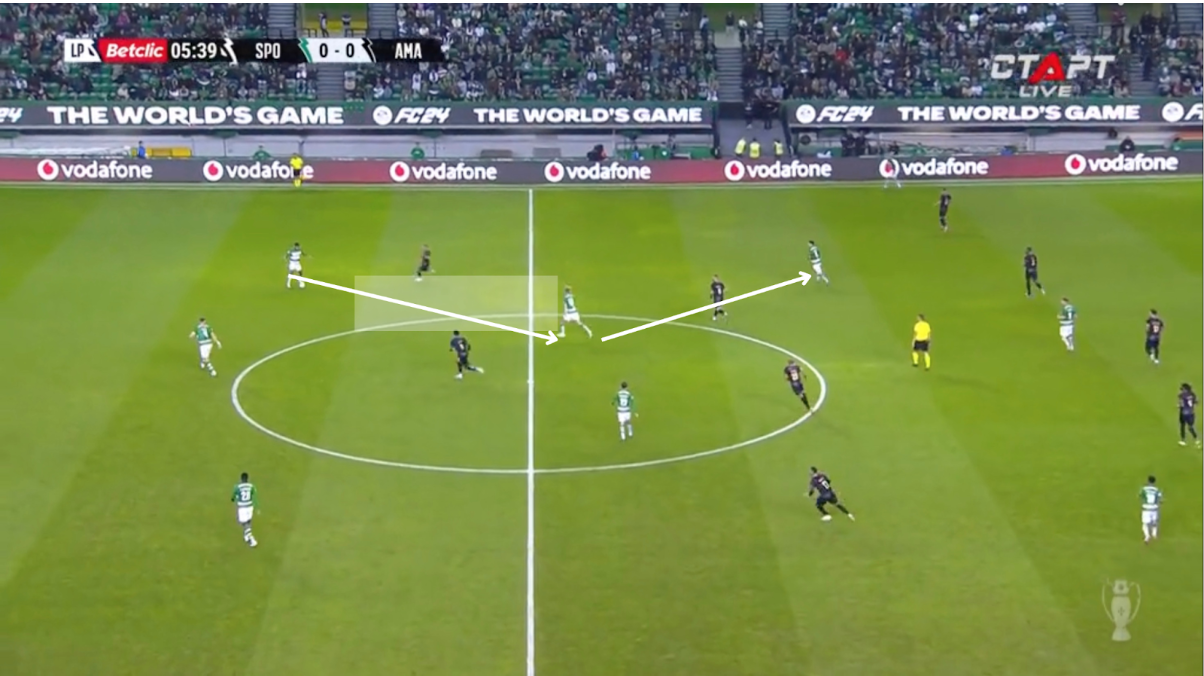
Here, the Danish midfielder has already scanned multiple times which allowed him to quickly progress possession further through the winger that had drifted into a central position.
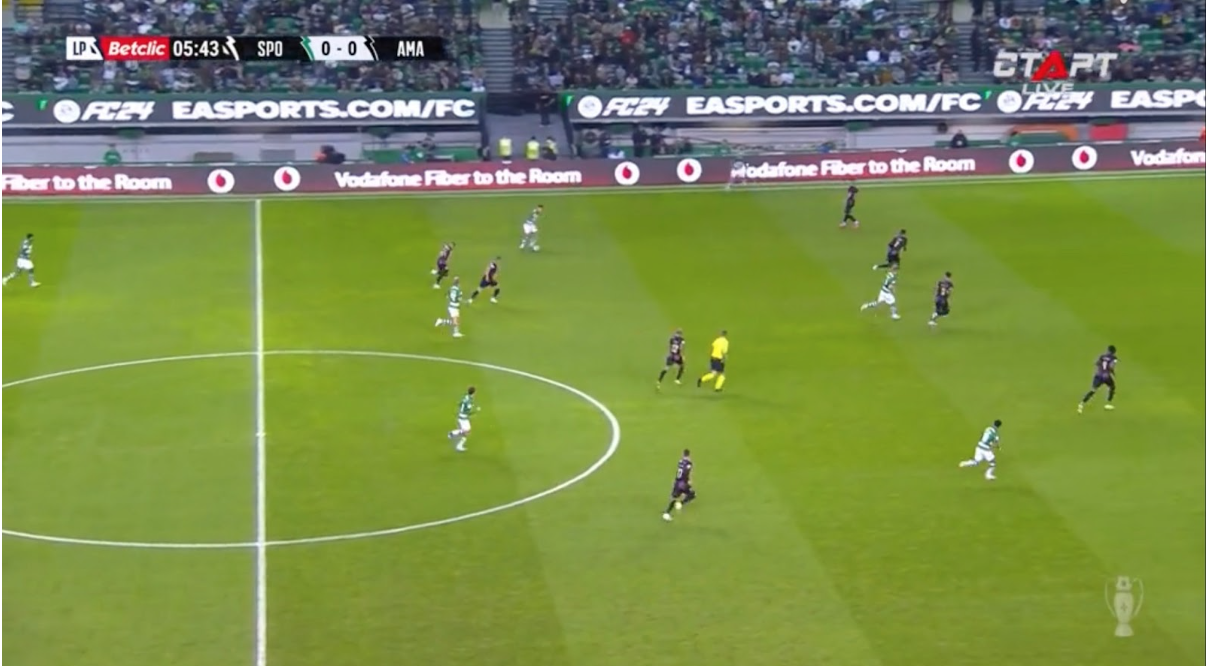
From this point onwards, progression of possession is more randomised and dependent on the situation, but there again are some patterns but they heavily depend on the opposition. Sporting could look for quick passing and quick chance creation or more possession based and held back attacks.
To give an example here the winger x wing back attacking pattern. As you noticed the winger is much more inside while the wing back hugs the touchline more. As the winger runs at the defence, he congests the defence as the fullback has to close the oncoming opponents down, which leaves heaps of space for the overlapping wing back.
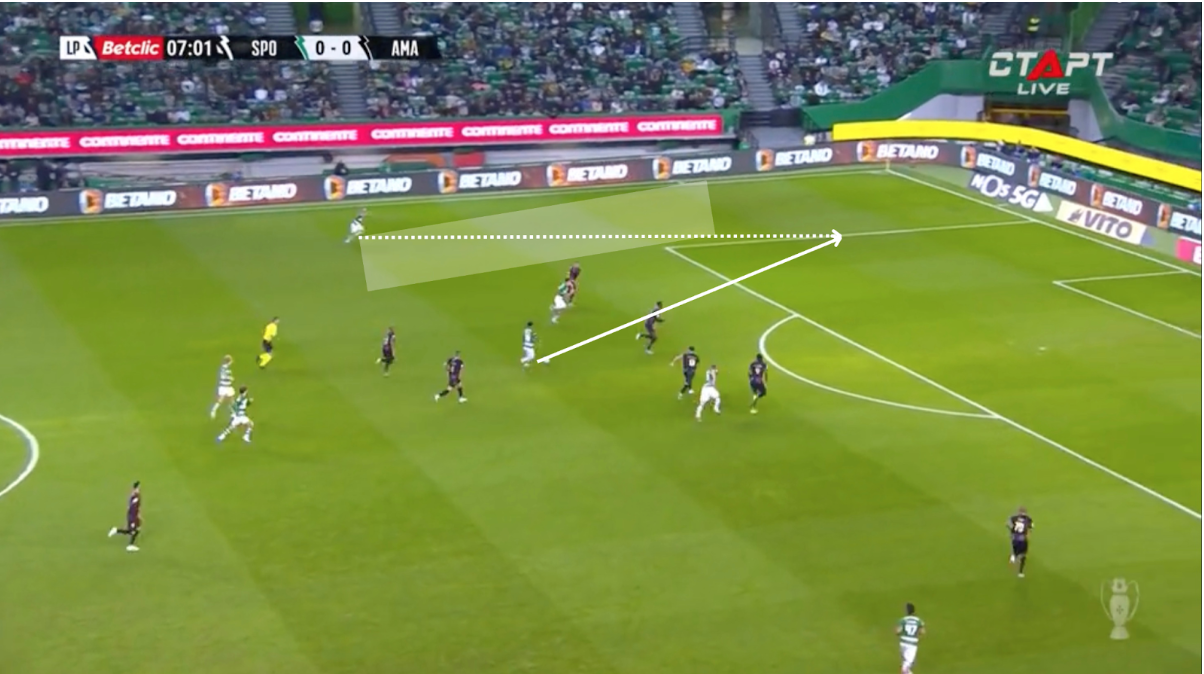
This is similar enough to what can happen from central areas as one of the midfielders or centre-backs on the ball will look to play a long ball towards one of the wing backs or strikers.
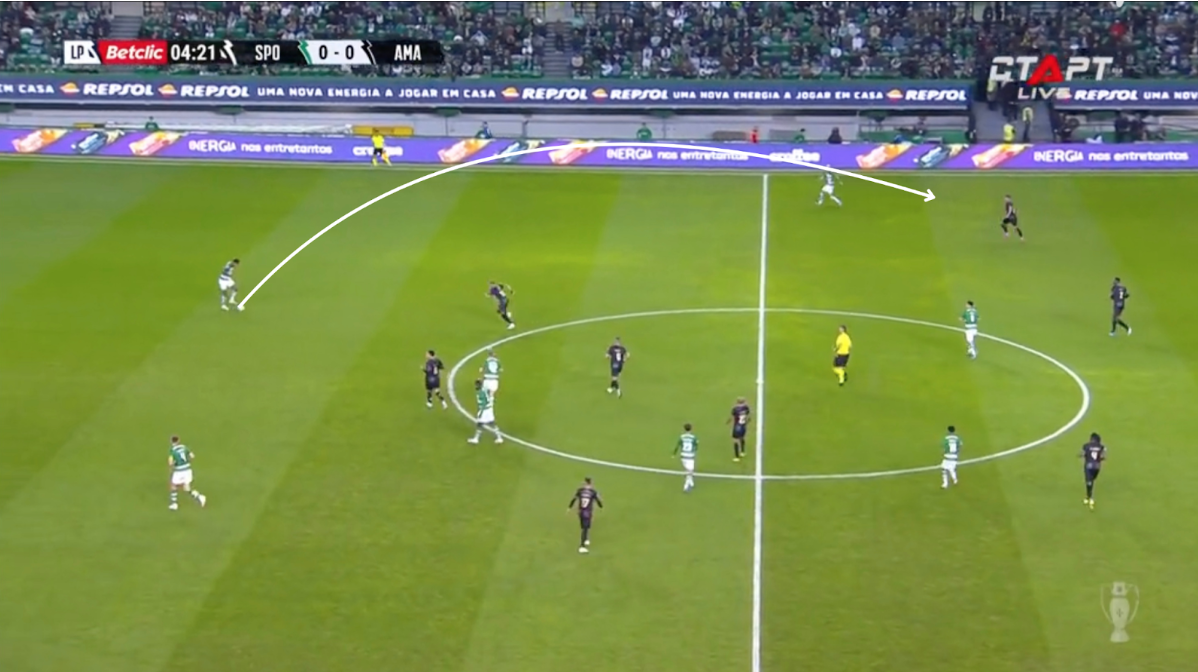
If the ball is too close to the wide areas, Gyökeres can come across to where the ball is going to win the second ball with his height while he rotates with the inside winger, this is relatively easy as the winger already sits more inside.
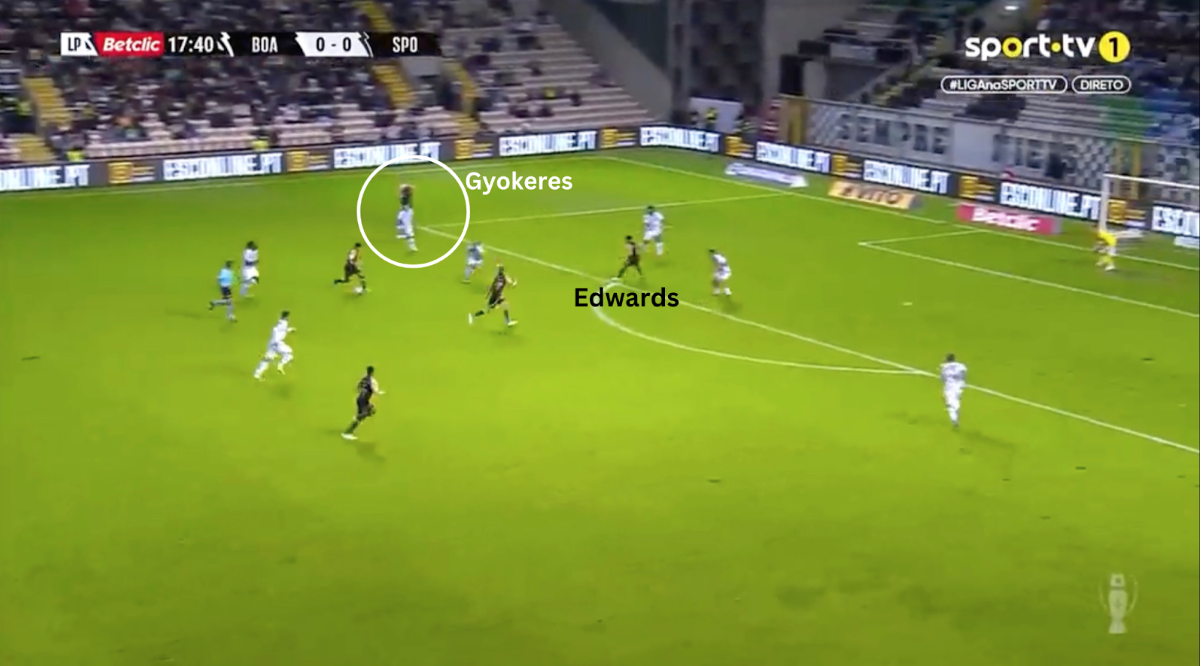
Despite his bulky physique, Gyökeres is a technically gifted striker whose close control and hold-up play fits like perfection in Amorim’s set-up as he can rotate with his wingers and keep the opponent guessing. Sporting are not afraid to go vertical and as such, it’s vital that the back three is capable of maneuvering their way out of pressure and picking out a forward with a long ball. Here, Sporting are unable to work the ball to their wing-back who was open in space, but the mere threat of the Swedish striker will force the attention of multiple opponents and free up a teammate in a dangerous area.
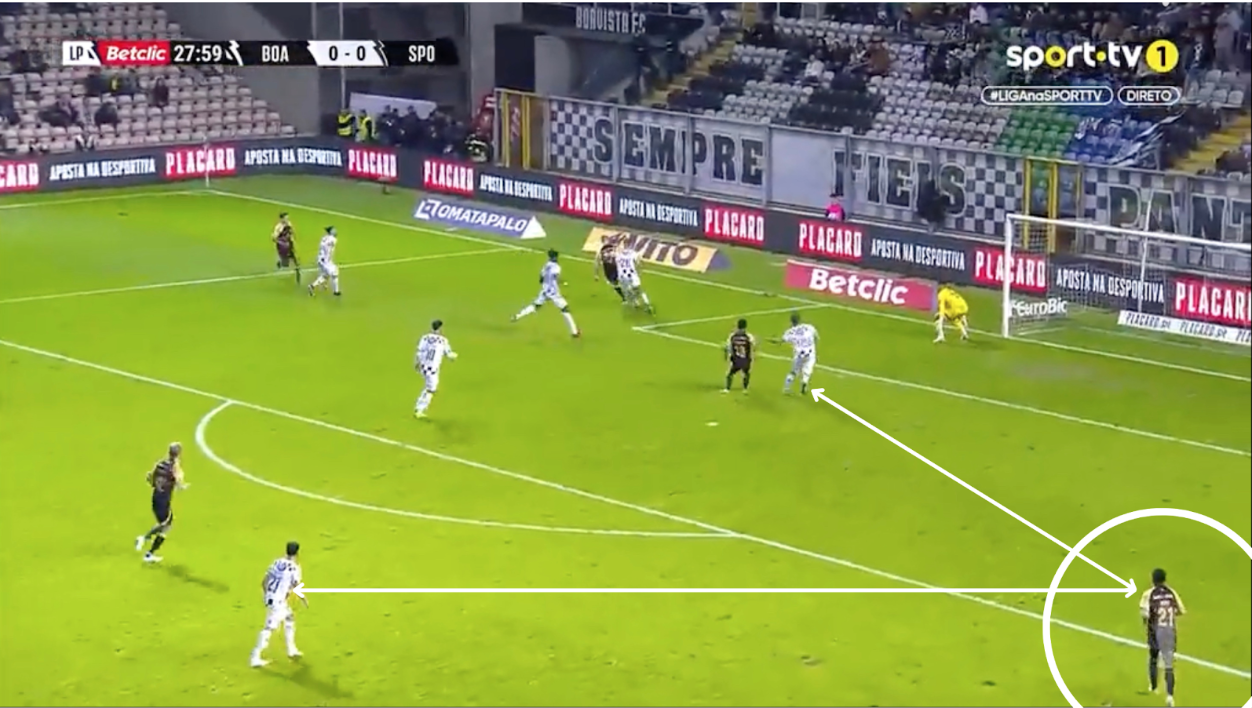
Similarly to Thiago Motta’s Bologna, Sporting use a man-oriented zonal marking system which combines man marking with the compactness of the zonal marking system. They operate in a hybrid 5-2-3 / 5-3-2 with the wingbacks dropping deep whilst the two midfielders hold their line.
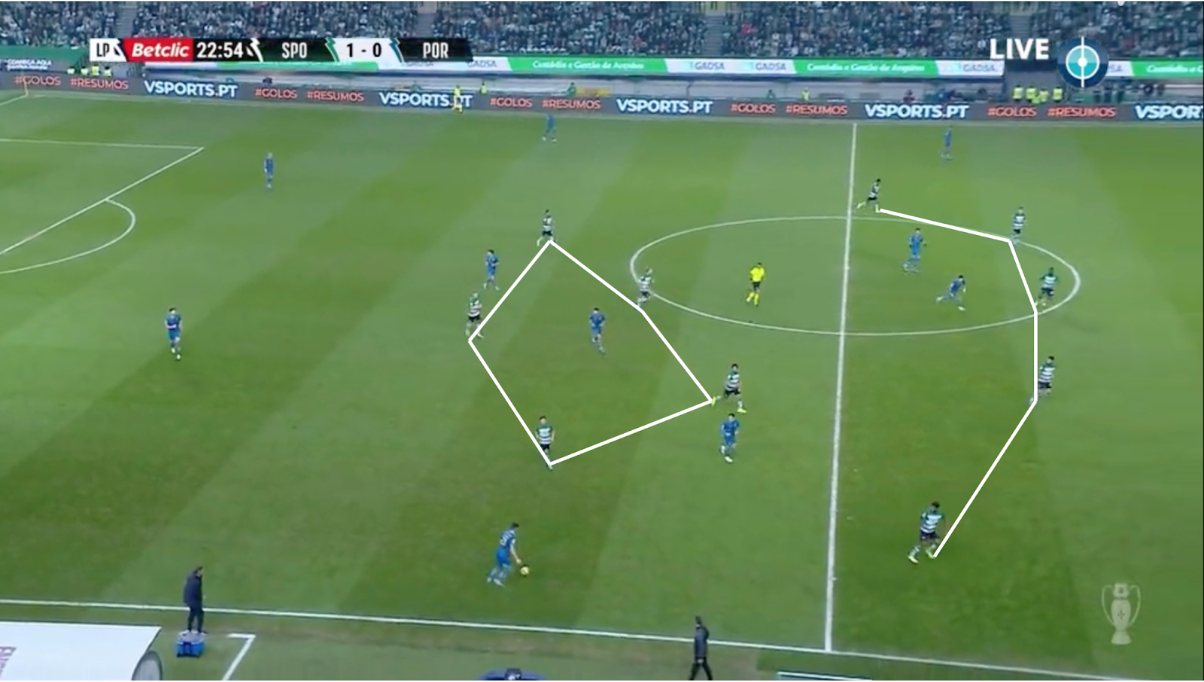
As Sporting apply pressure, the wingers press onto the wide centre-backs, while Gyökeres stands next to one of the midfielders. The other opposing midfielder is in one of the Sporting’s midfielders’ sights, but he doesn’t man-mark him.
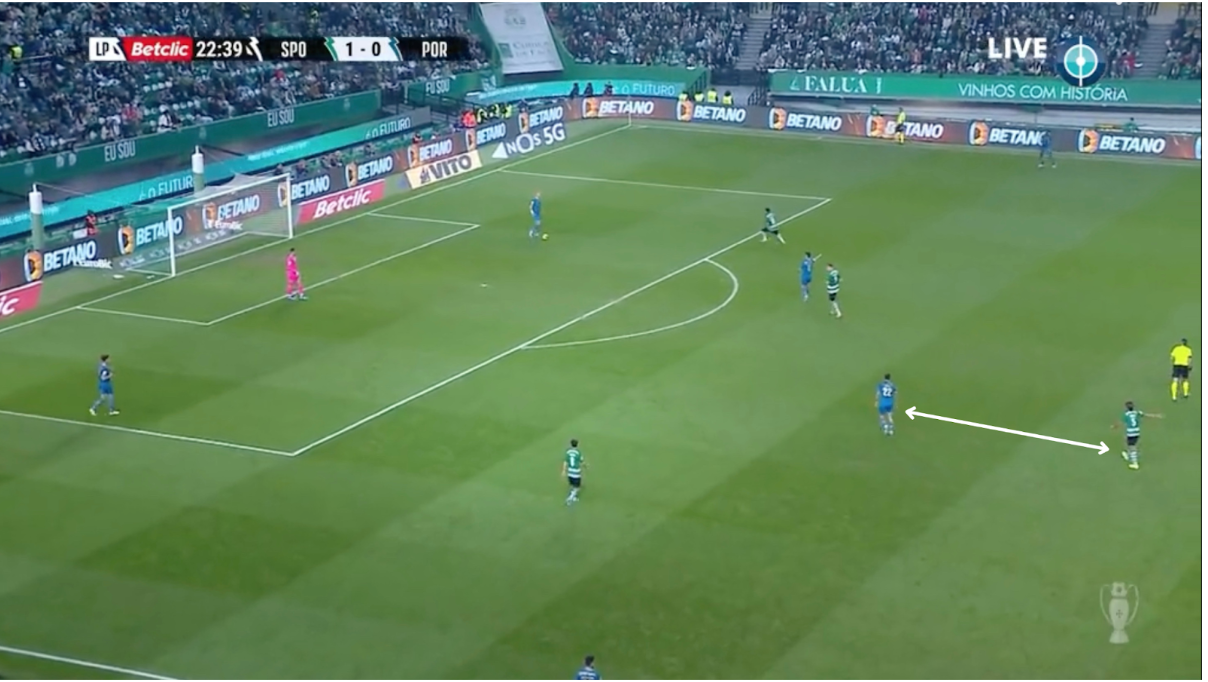
In the picture below, the Sporting midfielder detaches from Porto’s six and Gyökeres takes over, but instead of one player man-marking his opponent, the Sporting midfielder stays back to hold the shape of the formation together. This prevents gaps from forming and keeps the opponent on their feet, and it is a vital principle of the ‘man-oriented zonal marking’ system.
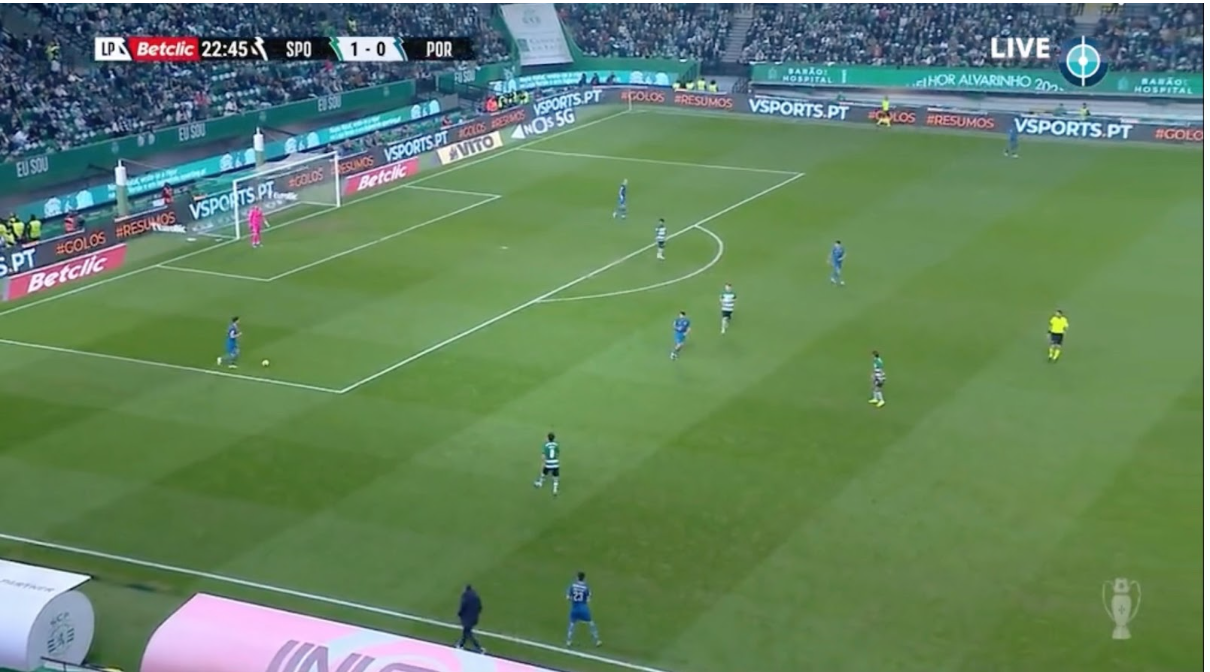
Sporting make heavy usage of pressing traps, as seen below where the winger blocks off the pass which forces the ball through the middle where Ousmane Diomande pushes forward and wins the ball back.
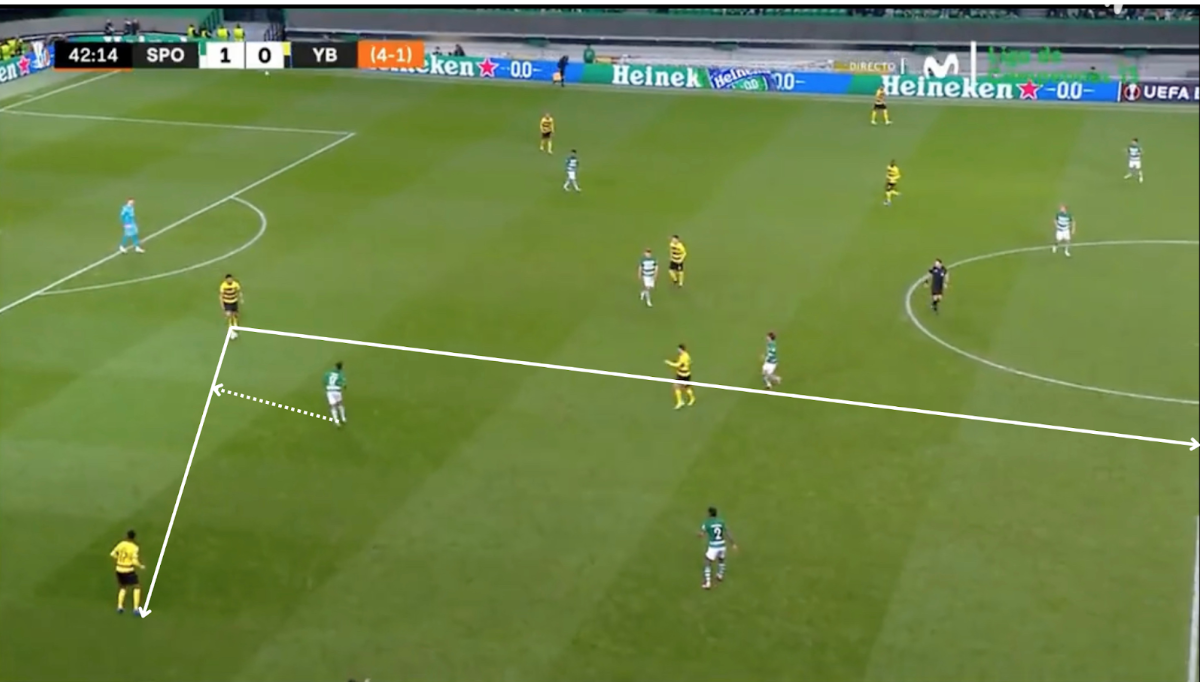
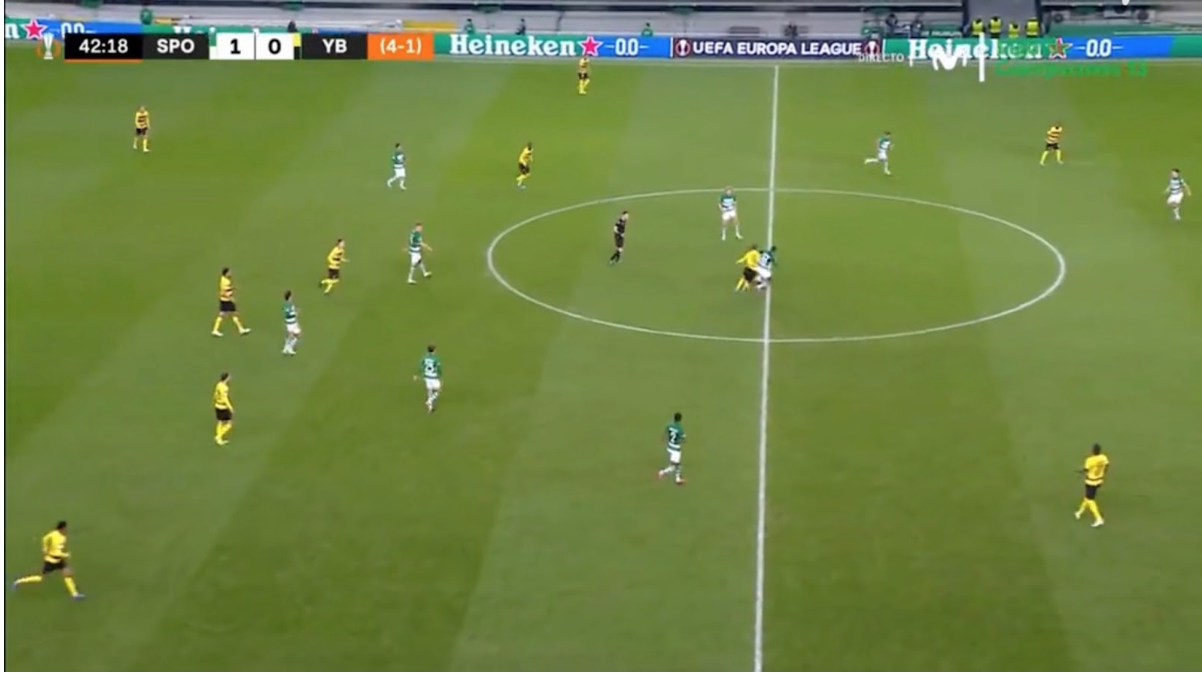
Whilst Xabi Alonso has removed himself from the race for the Liverpool job after announcing his decision to stay put at Bayer Leverkusen, Rúben Amorim finds himself as the favorite to replace Jürgen Klopp at the helm at Anfield as well as the subject of interest from Bayern Munich and Barcelona. The 39-year-old declined to squash the rumors in a press conference prior to the Benfica match, stating that he “can’t make any guarantees” as to his whereabouts for next season.
“Sporting are dealing with their future and I can’t decide now because I gave my word, I can’t go back on that, so if I don’t win trophies, I’m going to leave Sporting. I’m not worried about that right now. The future has been planned for quite a long time.
We’re all together as a club and looking into all situations and what we want for next season, so that’s the main reason why I can’t guarantee anything. I said that to my players and as the leader I can’t go back on my word, as hard as that may be. We have to win trophies, we’re on track to do that and that’s why it’s so important to win our next game.”
Since taking charge in March 2020, Amorim has seen quite a few players depart the Estádio José Alvalade from Nuno Mendes to João Palhinha to Pedro Porro to Manuel Ugarte, but he has nevertheless been able to reestablish Sporting as a force to be reckoned with on the domestic stage, ending a duopoly that had ruled Portuguese football for the first two decades of the century.
It’s seemingly only a matter of time before Amorim’s glorious reign in Lisbon comes to an end with Europe’s biggest clubs drawing their attention to the Portuguese manager, but before that, he’ll be looking to come away with his second league title as Sporting manager. His next challenge? A potential title decider against Benfica — the same club where he played at between 2008 and 2017 and won three league titles.
By: Teo Slehofer / @TeoSlehofer
Featured Image: @GabFoligno / Carlos Costa – AFP
